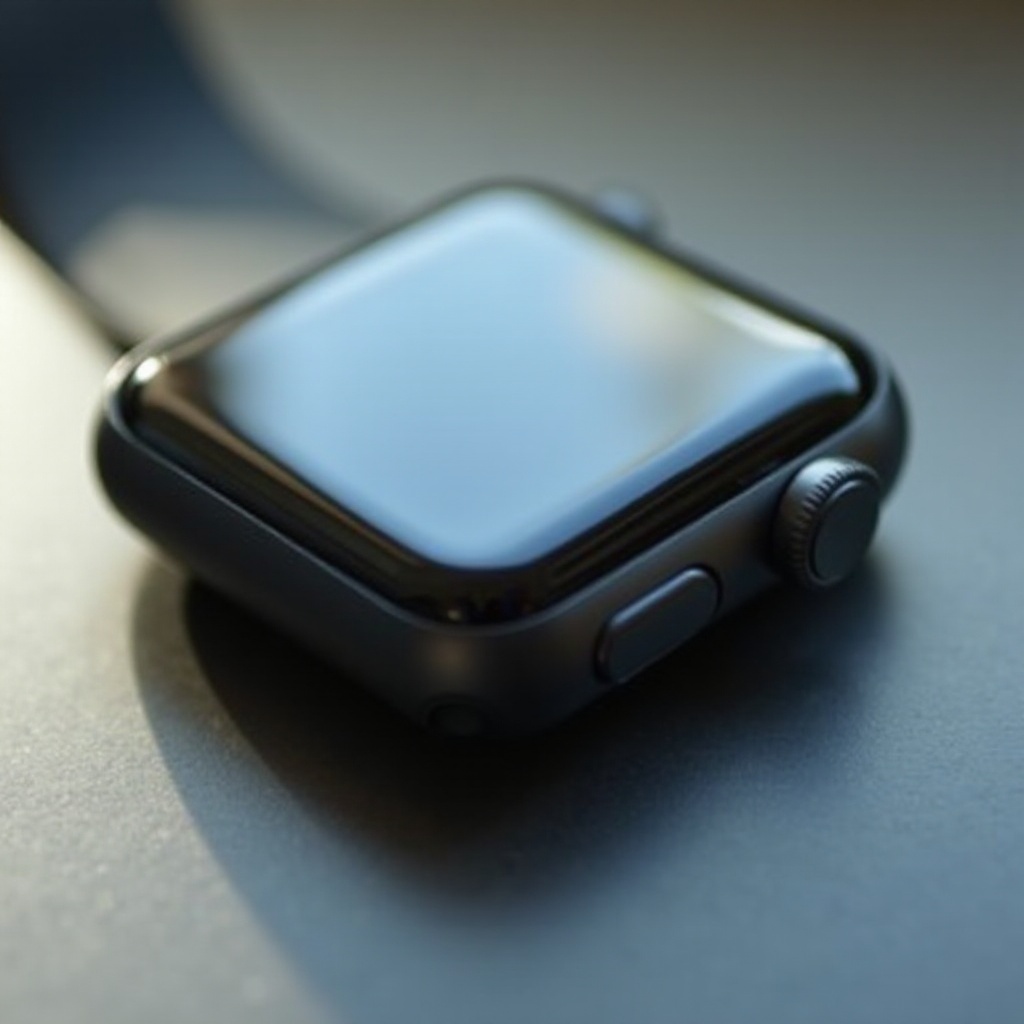Introduction
Experiencing an unresponsive Apple Watch touch screen can disrupt your routine and cause frustration. If you’re encountering this issue, you’re not alone. Our guide helps troubleshoot an unresponsive Apple Watch touch screen, aiming to restore its functionality with ease.
Understanding the root causes is crucial before diving into solutions. Whether it’s a software glitch or a hardware defect, every issue demands a distinct approach. Journey with us as we identify common causes, delve into step-by-step troubleshooting methods, and explore prevention tips and professional repair avenues.

Common Causes of Apple Watch Touch Screen Issues
The initial step in resolving tech problems involves pinpointing their potential causes. Several factors can contribute to Apple Watch touch screen dysfunction:
- Software Glitches: Bugs in the current software can often affect screen responsiveness, which updates typically aim to rectify.
- Screen Sensitivity Settings: Incorrect settings might render the touch screen less responsive, an aspect users sometimes overlook.
- Physical Damage: Drops or exposure to moisture can harm the screen or internal parts, leading to unresponsiveness.
- Dirt and Debris: Accumulated grime on the screen may interfere with its touch sensitivity.
Identifying these potential issues lays a strong foundation for effectively resolving the problem. Once you understand the cause, the solutions become more apparent.

Basic Troubleshooting Steps
Before seeking assistance, attempt these basic troubleshooting steps. They tackle common causes and may save you a trip to the service center.
1. Restart Your Apple Watch
- Press and hold the side button until the power-off slider appears.
- Drag the slider and wait for your watch to power down.
- After a moment, press and hold the side button again until the Apple logo is visible.
Restarting can often resolve minor software bugs affecting screen responsiveness.
2. Check for Software Updates
- On your iPhone, open the Apple Watch app.
- Navigate to General > Software Update.
- If an update is available, follow the on-screen prompts to install it.
Software updates can rectify known issues and enhance the device’s performance.
3. Inspect Screen Sensitivity Settings
- Access Settings on your Apple Watch.
- Choose Accessibility, then select Touch.
- Adjust sensitivity settings to a comfortable level.
These steps often suffice to resolve common problems. Yet, if your screen remains unresponsive, it might be time to pursue advanced troubleshooting steps.
Advanced Troubleshooting Techniques
If simple solutions fail, more comprehensive actions may restore touchscreen functionality.
1. Perform a Force Restart
- Simultaneously press and hold both the side button and the Digital Crown for at least 10 seconds.
- Release them when the Apple logo appears.
This comprehensive reset, without data loss, can resolve persistent software issues.
2. Unpair and Re-Pair Your Apple Watch
- Launch the Apple Watch app on your iPhone.
- Navigate to My Watch > All Watches.
- Tap the info button next to your watch, then choose Unpair Apple Watch.
- Follow the instructions to re-pair your watch.
Re-pairing refreshes the connection between your watch and iPhone, potentially resolving persistent glitches.
3. Reset to Factory Settings
- Open the Settings app on your Apple Watch.
- Tap General > Reset, then select Erase All Content and Settings.
- Confirm your choice.
Consider this step a last resort. It erases all data, so ensure you back up crucial information first.
Many users can resolve even tough touch screen issues by following these advanced steps. If problems persist, professional intervention might be necessary.

Professional Support and Repair Options
If you’ve tried every troubleshooting step and the touch screen remains unresponsive, professional help is advisable. Apple offers several options:
- Genius Bar Appointment: Schedule a visit at an Apple Store near you.
- Authorized Service Providers: These third-party services can perform repairs covered under warranty or AppleCare+.
- Mail-in Support: Contact Apple Support to arrange a mail-in repair if you can’t visit a location.
Professional assistance ensures accurate diagnosis and can tackle deeper hardware problems, beyond basic troubleshooting.
Preventing Future Touch Screen Problems
Preventive measures can protect your Apple Watch from future touch screen issues:
- Regular Software Updates: Ensure your watch software remains up-to-date for the latest fixes and features.
- Protective Gear: Utilize a quality screen protector and case to guard against physical damage.
- Keep It Clean: Regularly clean your watch with a soft, lint-free cloth to eliminate dirt or grime.
Using these preventive strategies helps maintain optimal function and extends your Apple Watch’s lifespan.
Conclusion
Touch screen issues on your Apple Watch are often resolvable through simple troubleshooting. From initial restarts to factory resets, this guide provides solutions for common problems. When these methods fall short, professional support offers reliable repair options. By adopting preventive measures, you can reduce the chances of recurring issues, ensuring your Apple Watch stays in prime condition.
Frequently Asked Questions
What should I do if my Apple Watch touch screen is still unresponsive after trying all troubleshooting steps?
If your screen remains unresponsive even after steps, reach out to Apple Support or an authorized service provider. They can diagnose and repair underlying hardware issues.
Can a screen protector affect the touch screen sensitivity of my Apple Watch?
Yes, an improper or low-quality screen protector can hinder touch sensitivity. Ensure it is compatible with your model and properly applied.
How often should I update my Apple Watch to avoid touch screen issues?
Regularly check for software updates and install them when available. Aim to update every few months to ensure optimal device performance.